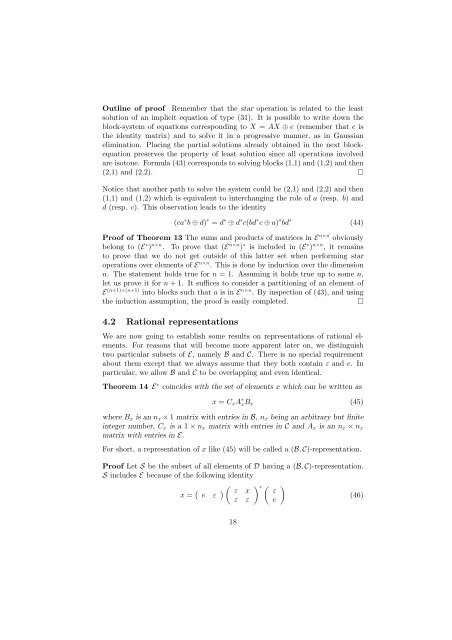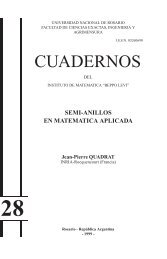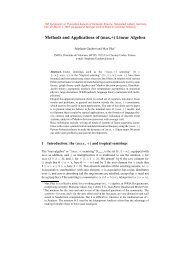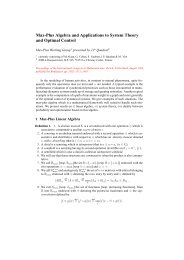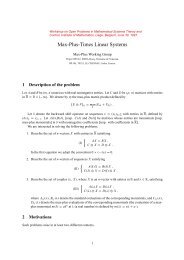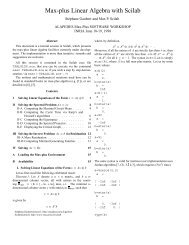View - Jean-Pierre QUADRAT - Free
View - Jean-Pierre QUADRAT - Free
View - Jean-Pierre QUADRAT - Free
Create successful ePaper yourself
Turn your PDF publications into a flip-book with our unique Google optimized e-Paper software.
Outline of proof Remember that the star operation is related to the leastsolution of an implicit equation of type (31). It is possible to write down theblock-system of equations corresponding to X = AX ⊕ e (remember that e isthe identity matrix) and to solve it in a progressive manner, as in Gaussianelimination. Placing the partial solutions already obtained in the next blockequationpreserves the property of least solution since all operations involvedare isotone. Formula (43) corresponds to solving blocks (1,1) and (1,2) and then(2,1) and (2,2). □Notice that another path to solve the system could be (2,1) and (2,2) and then(1,1) and (1,2) which is equivalent to interchanging the role of a (resp. b) andd (resp. c). This observation leads to the identity(ca ∗ b ⊕ d) ∗ = d ∗ ⊕ d ∗ c(bd ∗ c ⊕ a) ∗ bd ∗ (44)Proof of Theorem 13 The sums and products of matrices in E n×n obviouslybelong to (E ∗ ) n×n . To prove that (E n×n ) ∗ is included in (E ∗ ) n×n , it remainsto prove that we do not get outside of this latter set when performing staroperations over elements of E n×n . This is done by induction over the dimensionn. The statement holds true for n = 1. Assuming it holds true up to some n,let us prove it for n + 1. It suffices to consider a partitioning of an element ofE (n+1)×(n+1) into blocks such that a is in E n×n . By inspection of (43), and usingthe induction assumption, the proof is easily completed.□4.2 Rational representationsWe are now going to establish some results on representations of rational elements.For reasons that will become more apparent later on, we distinguishtwo particular subsets of E, namely B and C. There is no special requirementabout them except that we always assume that they both contain ε and e. Inparticular, we allow B and C to be overlapping and even identical.Theorem 14 E ∗ coincides with the set of elements x which can be written asx = C x A ∗ xB x (45)where B x is an n x × 1 matrix with entries in B, n x being an arbitrary but finiteinteger number, C x is a 1 × n x matrix with entries in C and A x is an n x × n xmatrix with entries in E.For short, a representation of x like (45) will be called a (B, C)-representation.Proof Let S be the subset of all elements of D having a (B, C)-representation.S includes E because of the following identityx = ( e ε ) ( ) ∗ ( )ε x ε(46)ε ε e18


